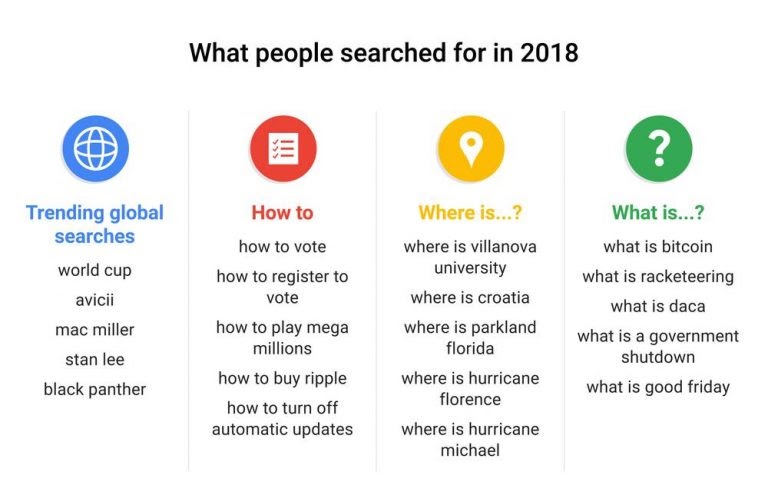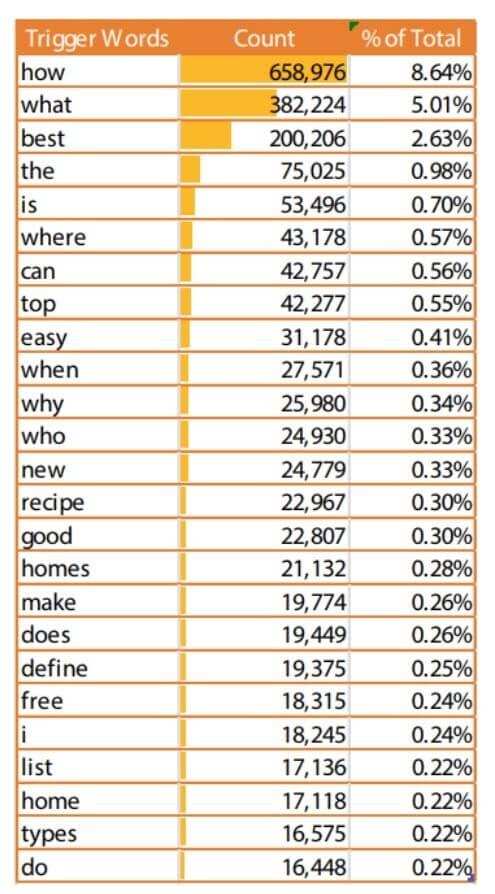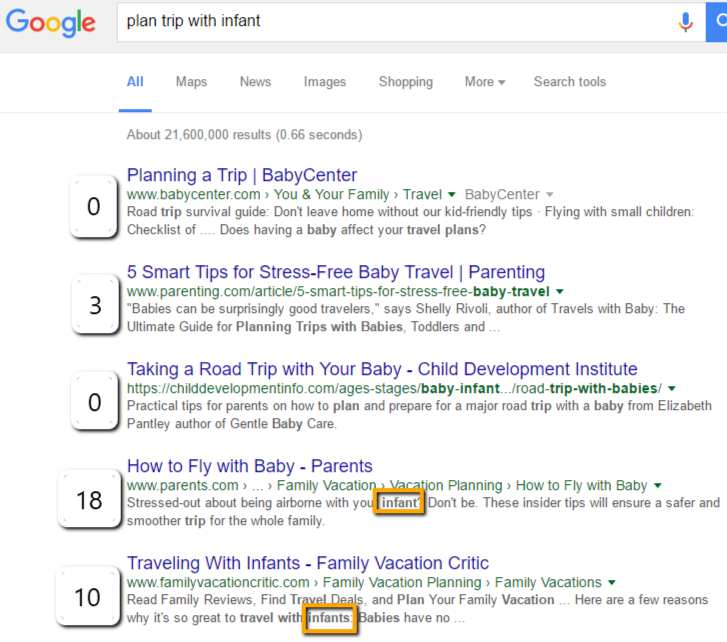What does 2019 have in store for SEO professionals and online business owners?
In 2018, we saw a mobile-first index, an enhanced focus on the loading speed of your website, core algorithm updates, and more.
We believe that websites will have to focus a lot more on high-quality content, voice search, and search intent this year to stay competitive and on top of the SERPs.
Here are the top 5 SEO trends that you should pay attention to in 2019.
1. High-quality and link-worthy content
Excellent content has always been a cornerstone for an effective search engine optimization (SEO) strategy. In 2019, its importance is expected to increase manifold.
Google continues to focus more on high-quality and informative content as its algorithms evolve and become smarter. Websites that continuously publish useful content for their audience find it easier to optimize their websites for search engines and rank higher in the SERPs.
Eric Enge, General Manager of Perficient Digital, said:
“We tracked the SEO performance of a number of different websites. The sites that provided exceptional depth in quality content coverage literally soared in rankings throughout the year. Sites that were weaker in their content depth suffered in comparison.”
The takeaway here is that the content you publish needs to be in-depth. It means that you should not just create content for the sake of keeping your blog alive and fresh. The aim should be to add value to the industry and for your users.
Create high-quality, in-depth, and informative content, which is more likely to be appreciated by readers as well as other bloggers. This opens up new opportunities for backlinks — which is another essential component of higher rankings in the search engine results pages.
Studies reveal that long-form content is more likely to acquire backlinks.
Therefore, in 2019, your aim should be to create in-depth, long-form content to support your SEO strategy.
2. Simpler queries
According to the recent ‘Year in Search’ data shared by Google at the end of 2018, more and more online users are looking for brief answers.
The conversation has shifted from complex queries to simpler ones with relatively simpler keywords, e.g., how to, where is, what is, etc.
Take a look at the following image that demonstrates what people searched for in 2018. More importantly, focus on the last three major categories.
As you can notice, people are more interested in straightforward answers.
In 2019, make sure that your content strategy accommodates these types of searches. You can create more how-to guides that answer a query by listing all the steps clearly. Similarly, you should also focus on simpler questions that start from ‘where is’ and ‘what is’.
Creating an FAQ web page that answers most of these questions will also be a good option that may also help with search engine rankings for multiple keyword phrases.
Moreover, these types of queries may also help you with voice search.
3. Voice search
According to a study by comScore, 50% of all searches will be voice searches by 2020. More than 13% of all households in the United States of America already own a smart speaker. This number is expected to jump up to 55% by 2022.
There is no doubt that voice search is increasing in popularity. To stay relevant and competitive in 2019, your SEO strategy needs to accommodate this rising trend.
The good news is that accommodating voice search does not have to be very difficult — especially if you do it smartly. If you look into it, more than 20% of voice search queries are triggered by a combination of about 25 keywords. Out of the 20%, approximately 16% of voice search queries are triggered by just three queries.
Take a look at the following chart.
From 2019, voice search will start playing a more important role.
4. Website loading speed
Website loading speed has been playing an important role for a few years now. In 2019, its effect will be even more visible on search engine rankings.
It is important to understand that website loading speed affects several other elements that, in turn, negatively affect the search engine rankings of a website. For example, for a website that takes one second to five seconds to load, the bounce rate increases by 90%.
The 2018 benchmark report by Google says, “today it’s critical that marketers design fast web experiences across all industry sectors.”
With AMP on the rise, and website loading speed will continue to become more and more important. There are a few ways you can improve the loading speed of your website:
- Minimize HTTP requests
- Compress images
- Minify JS and CS files
- Defer JavaScript loading
- Reduce server response time
- Use a CDN server
For more information, read our article on how to speed up your website.
To test how quickly your website loads, use our free tool to check your website’s speed.
5. Understanding user intent
To explain this point, we will divide keyword optimization into two parts:
- Selecting specific keywords and phrases that users type in a search bar
- Identifying the keywords and understanding the answers that the users are looking for despite not searching for them in search engines
The second part of keyword optimization can be understood as the ‘user search intent’.
As search engines evolve, they are paying more attention to the searcher’s intent instead of the specific keywords that she uses. In 2019, we believe that we will see more of this phenomenon.
Therefore, instead of only focusing on specific keywords and keyword phrases, try looking beyond that — to the user’s search intent. As Google puts more focus on providing the best possible answers to online surfers, it takes into account the intent behind a searcher’s query instead of the specific keywords he uses.
Here is an example.
Notice that the keyword phrase that the user searched for is ‘plan trip with infant’. However, the first web page at the top of the SERP does not even use the keyword ‘infant’.
On the other hand, the fourth result from parents.com uses the keyword infant 18 times. That keyword can also be found in the meta description of the web page. However, Google still did not put that result on the top.
Why?
It’s simple. Google believes that the first web page from babycenter.com is more in line with the user is searching for — even though it does not have the keyword that the searcher used.
On the other hand, Google believes that the fourth result does not have the right answers for the user in line with his search intent.
In 2019, we may see more anomalies like these. Eventually, this is how search engine optimization will evolve further.
To stay competitive in the SERPs, try to understand the user’s search intent and create content in accordance with that. Your web page may rank on the top of the SERPs even if it does not use specific keywords — for as long as it provides all the right answers.
Conclusion
This year, websites with outdated SEO techniques will suffer the most. It is, therefore, important to keep yourself up-to-date and utilize the trends mentioned in this article to have a stellar 2019.
